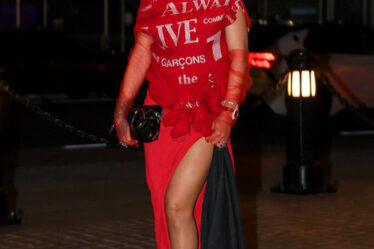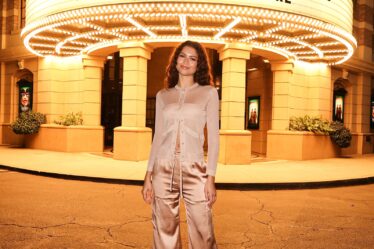Follow in the path of fashion insiders: apply for your next job on BoF Careers now.
Growing up with a “crazy, personal obsession with clothes,” stylist and brand consultant Matthew Henson began his career in editorial as an intern at Flaunt magazine, before working up to fashion editor at the title. After moving to Complex magazine, working as fashion editor there for 6 years, Henson pivoted his career to freelance styling.
Since 2012, Henson has been the stylist for A$AP Rocky and The Weeknd’s stylist — notably styling his 2021 Superbowl performance. His work has appeared in publications such as WSJ Magazine, Esquire, Time and GQ.
In the latest BoF Careers LinkedIn Live broadcast, Matthew Henson shared what he had learnt in building a career in fashion. Here, BoF Careers shares his key insights and advice on breaking into fashion.
What drew you to a career in fashion?
I always wanted to be an editor, so a cousin of mine introduced me to a friend who was working at Flaunt magazine and I got an internship there. I dropped out of my senior year at university for the internship — it paid off for me but it doesn’t always work out like that. You have to know how to pivot — that’s the most important thing when it comes down to learning in a formal setting and then transitioning to working in an informal setting.
What qualities helped you stand out in your first role?
There was a defining moment when I was interning with about five or six others. There was a cover shoot that we had at the time and the artist gave us free rein to do whatever we wanted to express ourselves creatively.
Two days before the cover shoot, [our editor] comes over and says that we have another shoot, and it’s a well story — one of the stories that you see before all the bigger stories [in a print publication]. Nobody spoke up so I volunteered to do it because it was another way to let me show him what I could do on my own.
While everyone went and did the cover, I did this well story. Everybody had a great time with the cover, but I was the one that ended up getting the job because he wanted to see who would sacrifice the glory for the guts. That’s how I got the job.
You always need to keep yourself grounded.
What key lessons did you learn from starting out?
Something that I learned in the beginning of my career that stayed with me is […] humility. All of us have a different path, some of us will go on to become entities all on our own — your own platform, celebrity, designer, whatever the case may be. But for me, I take such great pride and pleasure in the work that I do. I love working with talent that has a really strong point of view because I can learn so much from the people that I work with.
Sometimes when you’re working in this industry and you’re working with famous people, it’s easy for you to forget the foundation of who you are and forget your actual goals if you get caught up really easily. You always need to remember the person you are working for.
You always need to keep yourself grounded, especially stylists. Nationally, we’re providing a service and expressing ourselves, but we are catering to someone and partnering with them. You have to understand that it’s not necessarily about you — the bigger picture is that you’re getting to collaborate and your work is going to be seen and appreciated by so many.
What skills are necessary for working as a stylist today?
It’s more about your interaction and your connection — the back and forth between you and the client and that synergy, because sometimes it can be there and other times it’s not. There are success stories and there’s also a lot of failures, but you shouldn’t be afraid to fail. You shouldn’t be afraid to not get what you want because you won’t get there unless you have those bad moments as well. You have to be very mindful that your longevity is dependent upon your record with the brands and your clients.
It’s all about your reputations and the relationships that you build. If you want to do this, your notoriety and your fame will come if you do great work, but it’s less about focusing on building yourself as a brand. There’s a lot of merit there.
The saying goes “there is no new thing in fashion,” but there are new ways to approach things that have already been made and that’s really important.
The most important thing is to stay focused on your path and not deviate.
What makes a junior stand out to you today?
Keep looking forward. Don’t look at what’s going on around you or what other people are doing. If you have your own point of view, whether people like it or not, they will come around to it eventually.
I remember some of my work in the beginning of my career, people used to talk so much shit and it was highly critiqued — it still is. It’s not necessarily digestible at first but I think it takes some time and then other people start to enjoy it and start to try their own versions of it as well. That’s really rewarding. But the most important thing is to stay focused on your path and not deviate. It’s easy to get distracted or feel like you need to start doing what other people are doing.
How can talent build and strengthen relationships in the industry?
There’s some people that just want to work with famous people or certain photographers and to become famous on their own. You want longevity in the business, you want to pivot and do something else because those opportunities are there too, if you’re diligent and good at what you do. When you’re able to get into those spaces, you get more opportunities. They trust you with bigger things — it’s not necessarily just about the clothes, it’s about the overall picture that you’ll be brought in to do other things that you never thought to do.
I’m super lucky to work with the people that I work with. It’s something to be said when somebody that you respect and admire, trusts and respects you in the same way. I work towards that with everybody.
What is essential to working in the fashion industry today?
Another part of styling is really about your personality and how people receive that. Whether you have a really strong personality or something that’s in the middle, laid back and behind the scenes — it depends on what type of person you are. There’s space for everybody. It’s about the energy that you bring there because everybody on set feeds off of the person that’s doing the wardrobe, 90 percent of the time.
Your demeanour is really important and reciprocal energy. You have to remember that you might not always be put in a position to shine, but it’s your job to push through and make that shit happen. It’s what people remember often.
Discover jobs stylist related roles on BoF Careers:
Junior Digital Stylist, Burberry — London, United Kingdom
Showroom Manager, Reference Studios — Berlin, Germany
Client Specialist, Danielle Frankel Studio — New York, United States
Retail Stylist, Nili Lotan — New York, United States
Stylist Co-Ordinator, Bloomingdale’s — Georgia, United States
Visual Stylist, Neiman Marcus — Florida, United States
Private Client Stylist, Farfetch — Tokyo, Japan
Disclaimer: This article has been edited and condensed for clarity.



